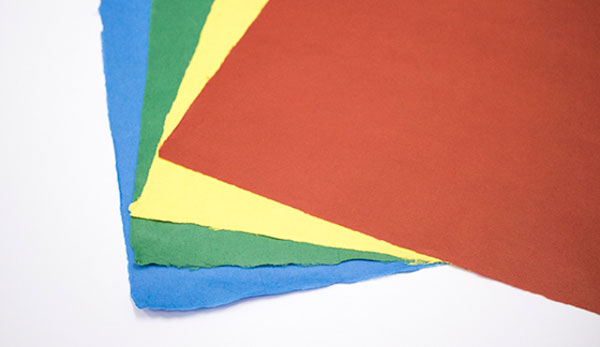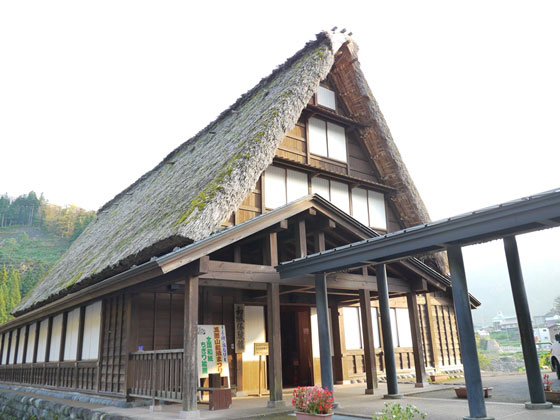
- Traditional Japanese paper
- Toyama
Echu traditional Japanese paper Echu washi
Developed from simple paper used in an apothecary
Over 100 different varieties of refined washi
Description
What is Echu traditional Japanese paper ?
Etchu washi is traditional Japanese paper made in Asahi, Yatsuo, and Taira in Toyama prefecture. Each production area makes their own type of washi which are called Gokayama washi, Yatsuo washi, and Birudan washi.
This craft has slight regional variations among a wide variety of products but all of the paper is sturdy, high-quality, and appreciated for daily use. The main uses for Gokayama washi are shoji sliding paper doors, painting, and printmaking papers, as well as papers for restoring cultural heritage. Yatsuo washi is known for its patterned papers made through the unique katazome dyeing technique, as well as a range of paper goods. They produce Japanese paper for processing rather than for writing or drawing, while Birudan washi is famous for its calligraphy and painting papers.
Today, craftsmen maintain traditional techniques and products, but they have also pioneered the development of new paper products. There are several new products using Yatsuo washi’s katazome modern patterned papers as well as the checkered patterned and colorful luxury papers of Gokayama washi.
History
Although the origin of this craft is unclear, it is thought to date at least back to the year 774, as a manuscript from that year called Zusho-ryoge mentions Etchu as a paper production area. The Engishiki, which are detailed regulations of the state completed in the mid-Heian period (794-1185), mentions that Etchu washi was used to pay taxes to the Imperial Court. Production of Yatsuo washi grew especially between 1688 and 1704. The lord of the Toyama domain (present day Toyama city), Masatoshi MAEDA, encouraged a herbal and medicinal business to grow in the area, which caused increasing demand for paper to wrap powdered medicine, customer roster sheets, and paper carrier bags. Gokayama washi was a favorite of the lords of Kaga domain (present day Kanazawa city) and developed in the Edo period (1603-1868). In recognition of its traditional production techniques, Etchu washi was designated a National Traditional Craft in 1984.
General Production Process
- 1. Refining on snow
White bark that has been dried and preserved is softened and cleaned by soaking in a river or a watertank for one to three days. This process is necessary to soften the bark to remove any remaining dirt or dust. A more seasonal method is refining paper mulberry bark on snow for about two weeks.
- 2. Boiling and aging
To dissolve the bark fibers, an alkaline solution containing caustic soda, soda ash or lime, and water is boiled in a large vat with the white bark for about two hours.
- 3. Removal of lye
The fibers are left overnight and rinsed several times to remove the lye.
- 4. Bleach washing
To make shoji papers or other kinds of white paper, the fibers are bleached by washing with sodium hypochlorite or other bleaching agents.
- 5. Cleaning
The fibers are soaked in water to get rid of any remaining debris and any discolored fibers are carefully removed by hand. This is an essential process to produce high quality washi.
- 6. Beating
The fibers are beaten manually or by machine and broken down into a sticky mass. Traditionally a pestle or wooden hammer is used, but if by machine a beater with a rotating edge may also be used.
- 7. Papermaking
The softened fibers and neri, a gelatinous substance extracted from the roots of sunset hibiscus, are mixed with water in a large wooden watertank. The neri helps to keep the fibers separate in the water. Echu washi uses the nagashisuki method where paper is made in flowing water. This involves setting a reed screen inside a wooden frame, scooping the fiber mix into the frame, and then shaking to attain an even thickness. After the wet paper sheets have settled, they are laid on a board to make a paper bed.
- 8. Pressing
The paper sheets are left overnight. The next day they are pressed for a few hours to a whole day on a press to drain water.
- 9. Drying
After pressing, paper sheets are carefully peeled one by one from the paper bed and placed on a board to dry. There are several drying methods such as sun-drying or machine-drying with steam.
- 10. Inspection
The quality of the sheets is inspected and any damaged or uneven sheets are removed.
- 11. Pattern dyeing
To make patterned papers, katazome or the pattern dyeing technique is used. As pattern dyeing enables dyes to seep into the fiber, the beautiful design of the final product can be maintained even if the paper is crinkled.
- 12. Shipping
The shoji papers are cut to a range of standard sizes and ready for the market.
Where to Buy & More Information
Michi no Eki Taira

-
Address
-
Tel.+81-763-66-2403
-
ClosedDecember 29 to January 3
-
Business Hours9am to 5pm
-
Website
See more Traditional Japanese paper
- Mino traditional Japanese paper
- Echizen traditional Japanese paper
- Tosa traditional Japanese paper
- Sekishu traditional Japanese paper
- Inshu traditional Japanese paper
- Awa traditional Japanese paper
- Ozu traditional Japanese paper
- Echu traditional Japanese paper
- Uchiyama Japanese paper































































































































































































































































































